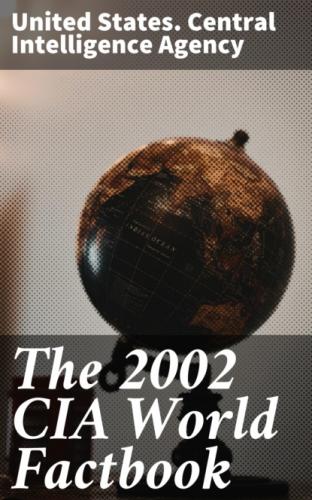Agriculture - products: coffee, cut flowers, bananas, rice, tobacco, corn, sugarcane, cocoa beans, oilseed, vegetables; forest products; shrimp
Exports: $12.3 billion (f.o.b., 2001 est.)
Exports - commodities: petroleum, coffee, coal, apparel, bananas, cut flowers
Exports - partners: US 43%, Andean Community of Nations 22%, EU 14%, (2001 est.)
Imports: $12.7 billion (c.i.f., 2001 est.)
Imports - commodities: industrial equipment, transportation equipment, consumer goods, chemicals, paper products, fuels, electricity
Imports - partners: US 35%, EU 16%, Andean Community of Nations 15%,
Japan 5% (2001 est.)
Debt - external: $39 billion (2001 est.)
Economic aid - recipient: $NA
Currency: Colombian peso (COP)
Currency code: COP
Exchange rates: Colombian pesos per US dollar - 2,275.89 (January 2002), 2,299.63 (2001), 2,087.90 (2000), 1,756.23 (1999), 1,426.04 (1998), 1,140.96 (1997)
Fiscal year: calendar year
Communications Colombia
Telephones - main lines in use: 5,433,565 (December 1997)
Telephones - mobile cellular: 1,800,229 (December 1998)
Telephone system: general assessment: modern system in many respects domestic: nationwide microwave radio relay system; domestic satellite system with 41 earth stations; fiber-optic network linking 50 cities international: satellite earth stations - 6 Intelsat, 1 Inmarsat; 3 fully digitalized international switching centers; 8 submarine cables
Radio broadcast stations: AM 454, FM 34, shortwave 27 (1999)
Radios: 21 million (1997)
Television broadcast stations: 60 (includes seven low-power stations) (1997)
Televisions: 4.59 million (1997)
Internet country code: .co
Internet Service Providers (ISPs): 18 (2000)
Internet users: 878,000 (2001)
Transportation Colombia
Railways: total: 3,304 km standard gauge: 150 km 1.435-m gauge (connects Cerrejon coal mines to maritime port at Bahia de Portete) narrow gauge: 3,154 km 0.914-m gauge (major sections not in use) (2000 est.)
Highways: total: 110,000 km paved: 26,000 km unpaved: 84,000 km (2000)
Waterways: 18,140 km (navigable by river boats) (April 1996)
Pipelines: crude oil 3,585 km; petroleum products 1,350 km; natural gas 830 km; natural gas liquids 125 km
Ports and harbors: Bahia de Portete, Barranquilla, Buenaventura,
Cartagena, Leticia, Puerto Bolivar, San Andres, Santa Marta, Tumaco, Turbo
Merchant marine: total: 11 ships (1,000 GRT or over) totaling 32,438
GRT/43,126 DWT
bulk 5, cargo 3, container 1, petroleum tanker 2 note: Germany 1
(2002 est.)
Airports: 1,066 (2001)
Airports - with paved runways: total: 93 over 3,047 m: 2 2,438 to 3,047 m: 9 914 to 1,523 m: 36 under 914 m: 9 (2001) 1,524 to 2,437 m: 37
Airports - with unpaved runways: total: 973 2,438 to 3,047 m: 1 1,524 to 2,437 m: 58 under 914 m: 602 (2001) 914 to 1,523 m: 312
Heliports: 1 (2001)
Military Colombia
Military branches: Army (Ejercito Nacional), Navy (Armada Nacional, including Marines and Coast Guard), Air Force (Fuerza Aerea Colombiana), National Police (Policia Nacional)
Military manpower - military age: 18 years of age (2002 est.)
Military manpower - availability: males age 15-49: 10,946,932 (2002 est.)
Military manpower - fit for military service: males age 15-49: 7,308,703 (2002 est.)
Military manpower - reaching military age annually: males: 379,295 (2002 est.)
Military expenditures - dollar figure: $3.3 billion (FY01)
Military expenditures - percent of GDP: 3.4% (FY01)
Transnational Issues Colombia
Disputes - international: Nicaragua filed a claim against Honduras in 1999 and against Colombia in 2001 at the ICJ over disputed maritime boundary involving 50,000 sq km in the Caribbean Sea, including the Archipelago de San Andres y Providencia and Quita Sueno Bank; maritime boundary dispute with Venezuela in the Gulf of Venezuela; Colombian drug activities penetrate Peruvian border area
Illicit drugs: illicit producer of coca, opium poppies, and cannabis; world's leading coca cultivator (cultivation of coca in 2000 - 136,200 hectares, an 11% increase over 1999); potential production of opium since 1995 has remained relatively stable at 66 metric tons; potential production of heroin has averaged 6.5 metric tons; the world's largest processor of coca derivatives into cocaine; supplier of about 90% of the cocaine to the US and the great majority of cocaine to other international drug markets, and an important supplier of heroin to the US market; active aerial eradication program
This page was last updated on 1 January 2002
========================================================================
Northern Mariana Islands
Introduction
Northern Mariana Islands
Background: Under US administration as part of the UN Trust Territory of the Pacific, the people of the Northern Mariana Islands decided in the 1970s not to seek independence but instead to forge closer links with the US. Negotiations for territorial status began in 1972. A covenant to establish a commonwealth in political union with the US was approved in 1975. A new government and constitution went into effect in 1978.
Geography Northern Mariana Islands
Location: Oceania, islands in the North Pacific Ocean, about three-quarters of the way from Hawaii to the Philippines
Geographic coordinates: 15 12 N, 145 45 E
Map references: Oceania
Area: total: 477 sq km note: includes 14 islands including Saipan,
Rota, and Tinian water: 0 sq km land: 477 sq km
Area - comparative: 2.5 times the size of Washington, DC
Land boundaries: 0 km
Coastline: 1,482 km
Maritime claims: exclusive economic zone: 200 NM territorial sea: 12 NM
Climate: tropical marine; moderated by northeast trade winds, little seasonal temperature variation; dry season December to June, rainy season July to October
Terrain: southern islands are limestone with level terraces and fringing coral reefs; northern islands are volcanic
Elevation extremes: lowest point: Pacific Ocean 0 m highest point: unnamed location on Agrihan 965 m
Natural resources: arable land, fish
Land use: arable land: 15% permanent crops: 7% other: 78% (1998 est.)
Irrigated land: NA sq km
Natural hazards: active volcanoes on Pagan and Agrihan; typhoons (especially August to November)
Environment - current issues: contamination of groundwater on Saipan may contribute to disease; clean-up of landfill; protection of endangered species conflicts with development
Geography - note: strategic location in the North Pacific Ocean
